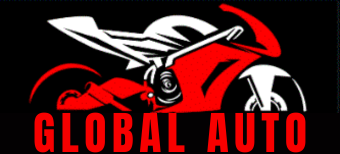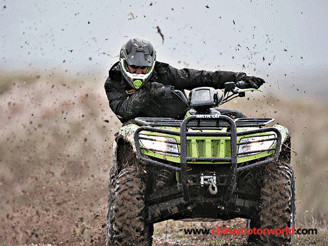Besides fun?
These rugged little workers assist us in countless chores and in a variety of environments. If you add a mower, tiller or rake, winch, trailer, or camper the uses are endless.

In America, ATVs are utilized by farmers, hunters, law enforcement, park rangers, golfers, nurseries, photographers, explorers and campers, all kinds of ranchers and anywhere you need to be nimble. It is good at quick turns and climbing over rocks, hills, steep inclines, and wading through creeks and mud.
In agriculture, an ATV is able to maneuver through areas not accessible to a pick-up truck or other motorized vehicles. Pennsylvania State College of Agricultural Sciences says ATVs are useful “to inspect crops and livestock; to fertilize and apply chemicals; to inspect and repair irrigation systems and fence lines; to supervise field crews; to herd livestock; to mark timber; to mow grass, to move dirt and to transport things from here to there and back again.”
Obviously there is no one-size-fits-all; the users are diverse. If I were a manufacturer of ATVs,how would I direct my designers and engineers to build these vehicles for the USA market? From manufacturing facility to dealers all over world, the aim is certainly to ship products that dealers can send out with happy customers.
Let’s look at some of those varied needs and desires.
Ranch, Farm, & Agriculture ATVs need colors that blend with nature, and are quiet as a stalking cat. Riders usually prefer a fully automatic transmission like a CVT. Most can get by with 2 x 4, but some will need 4 x 4 and a PTO for other power attachments.
Sport Quads should have a louder muffler and bright colors, because these appeal to younger riders. About half the riders will want a manual clutch and half a fully automatic. These are well-served by 2 X 4 ATVs.
Basic transport vehicles get riders to their work and running errands, so soft seats and suspension are welcome, as well as automatic transmission, and electric start. Many want a trailer hitch for add-ons.
Hunters will want vehicles in camouflage colors for invisibility in the particular environment where they hunt. They prefer automatic transmission, electric start, and strong front and rear racks to hold animals. A tow hitch should be standard equipment, with gun or shovel attachments.
Golfers require smooth tires that will not tear up the golfing green or terrain. They want nice racks, automatic transmission, and electric start. Bright colors are popular.
Park ranger, Law enforcement, or Military: These very different professions require many of the same tools and attachments for their work, such as automatic transmission, electric start, front and rear racks, tow hitch, and long rifle and hand gun holders. Their vehicles will need a strong electric front winch; a large easy-to-read dash board for fuel level, speed, clock, tip odometer, and regular odometer; several plug-in power points to add devices such as a police radio, navigation, and spot lights. All this will require a larger battery, or possibly two batteries, and larger alternator/Stator. Larger fuel capacity as well, and easy clip-on extra fuel canisters. These are not “show-off” vehicles, so no chrome or bright colors on the body, but rather standard black, tan or green flat military paint.

For an example of outstandingly successful ATV manufacturing, we can run the movie of ATV history backwards. There may be important lessons on strategy and determination from a company that has not wavered from attending to customer wishes.
ATVs were introduced to America in 1970, and quickly picked up by Honda as an idea with a future. It came in as a recreational vehicle, but Honda did not sit back in smug satisfaction. It sent engineers out in fields to follow farmers as they worked. They wanted to know exactly what an ATV could do for a farmer, and to use that information to adapt vehicles for a new market. In the 1980s, Honda took existing ATVs apart and examined every minute detail of the vehicles. As described by ATV-411.com, “[m]achines were run hour after hour, day after day for weeks, with riders wearing 50-pound instrument packs that recorded information on every aspect of the machine’s operation.” The designs that resulted from that research boosted Honda ATV sales in 1984 to 69 percent of all ATV sales in America.
By the 1990s it was clear that the potential uses for ATVs were wide open. Not only farmers, but also ranchers, foresters and many other working environments were discovering quads. Where horses or tractors or trucks had previously been used, the ATV did not require feeding all winter, never got sick or tired, and maneuvered easily in tight spaces. ATVs were proving to be reliable, versatile, and efficient.

An important lesson from Honda’s history, for any manufacturer, is the culture that drives their success: never stop looking for ways to improve the present. They are attentive to market needs and niches, and design products that are original. Original. New and exciting.
How would our Chinese ATVs look if we decided to become leaders? Not followers, but manufacturers with vision and foresight. As a dealer, I can tell you how proud I would be to fill my showroom with vehicles that command respect for their new applications and innovative options that no one else has offered. I know we can do this.


